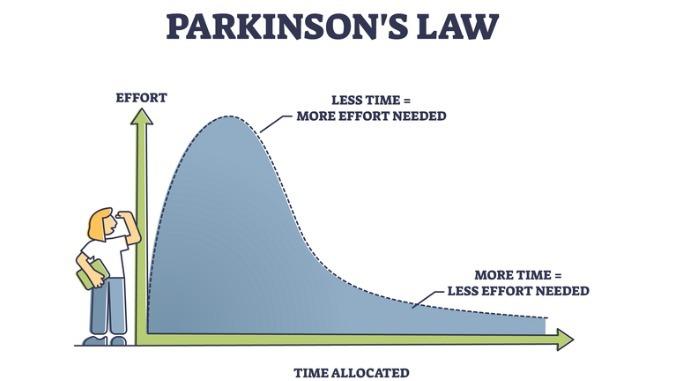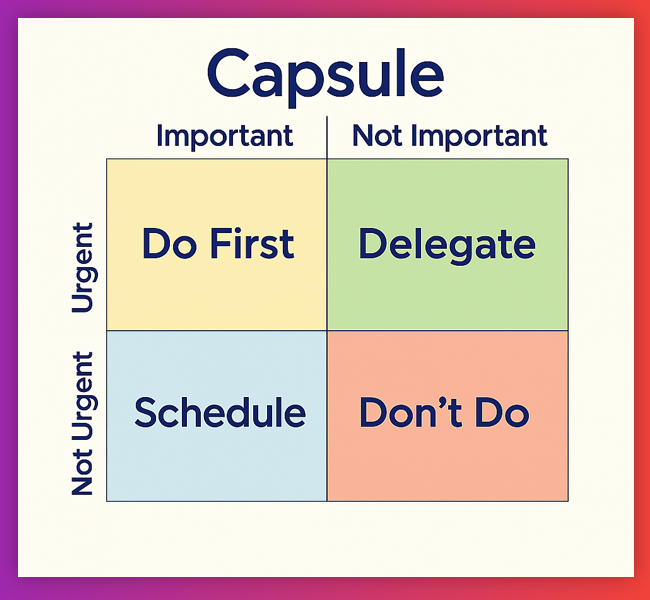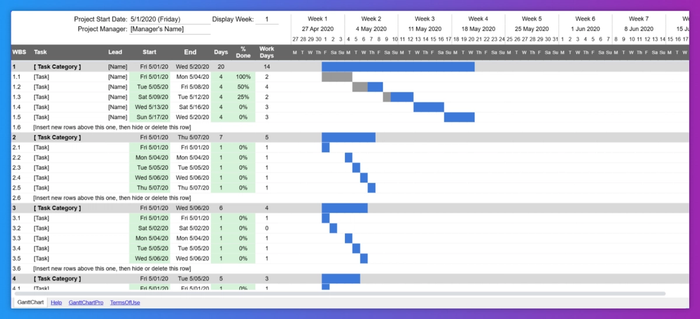For small businesses, time is a resource you can’t afford to waste. Every hour counts.
When projects slow down, it’s often not because of the work itself but how that work is managed. Tasks stack up. Handovers get delayed. Deadlines creep closer without clear direction.
This guide walks through practical ways to manage your project time, so you can keep tasks moving and protect the hours that drive your business forward.
What is project time management?
Project time management is the practice of planning and tracking how work gets done – so deadlines don’t drift, and teams don’t scramble. At its core, it’s about answering a few practical questions before and during a project:
- What needs to happen?
- Who’s doing it?
- When does it need to be done?
Ever had a project fall behind because someone forgot a task or two people doubled up on the same thing? That’s where time management makes a difference. It brings a bit of order to the chaos, helping work move forward instead of piling up last minute.
You don’t need a fancy tool to manage time well. All you need is a simple habit of looking ahead, setting time expectations, and checking progress regularly.
Why project time management matters (the stakes)
Every hour your team spends chasing updates, fixing last-minute mistakes, or waiting on others is an hour not spent moving the project forward. And those hours add up.
Most projects don’t finish on time: only 29% of teams hit their deadlines consistently. That delay eats into profit and creates a domino effect on everything else in your pipeline.
If you’re billing hourly, overruns shrink your margins. If you bill per project, delays mean more work for the same pay. And for lean teams, burnout is real: 85% of project managers say time pressure directly leads to exhaustion.
But here’s the upside: when you tighten how you plan and manage time, even a small change can free up hours every week. This would give you some room to take on more work and stop playing catch-up.
Time is a currency. If you don’t control how it’s spent, your projects will spend it for you.
11 project time management tips you can apply today
Most projects fall behind before they even start. The problem usually isn’t the work itself, but the lack of a clear plan for when and how it should get done. Below, you'll find simple, practical tips to stop small delays from turning into big problems.
#1 Define clear project goals and scope
If your team isn’t aligned on what the end result looks like, you’re going to waste time. Work grows unexpectedly. Priorities shift. Deadlines start to blur.
The solution is simple: write the goal down.
- What’s the deliverable?
- What’s not included?
- Who owns each part?
Even a one-pager with milestones and roles can prevent a lot of back-and-forth later on.
For example, say you're building a five-page website with a contact form and a six-week deadline. If a client asks for extras mid-project, you can point to the agreed scope and offer those changes as a future phase.
When the scope is clear, timelines hold better, and you're not left negotiating midway through.
#2 Break big projects into smaller, doable tasks
“Launch the campaign” sounds like a task, but it’s really a bucket of work. Buckets don’t move. Clear actions do.
Here’s how to break things down so your team knows what to tackle next:
Techniques to make task-splitting easier:
Work backward from the goal
When a task feels overwhelming, flip it. Start with the final outcome and trace the steps that get you there.
For example, if your goal is to launch a new website, don’t begin with “design homepage.” Instead, write “launch site” at the top, then list what must happen right before: run final tests, upload files, review copy, gather approvals.
Use the “eat the frog” method

This popular technique (from Brian Tracy’s productivity advice) says to start your day with the task you least want to do—the one you’re most likely to put off.
It’s usually something important but uncomfortable: calling a difficult client, reviewing a dense document, or making a tough decision. Doing it first frees up your mental bandwidth and gives the rest of your day momentum.
Apply the 20-minute rule
If a task feels hard to start, ask yourself: “Can I begin this in the next 20 minutes?”
If not, it’s probably still too vague. Instead of “prep launch plan,” break it into “list promo channels,” “write email draft,” and “outline schedule.” When a task feels specific enough to act on now, it’s ready.
Create reusable checklists
Not every project is unique. If you find yourself repeating a process, like prepping for events or onboarding clients, turn it into a checklist.
Examples?
- New client onboarding: send welcome email, set up account, schedule intro call
- Product launch prep: finalize offer, prep marketing assets, test checkout flow
- Monthly newsletter send-out: write content, proofread, schedule in tool, test links
- End-of-month invoicing: check timesheets, generate invoices, email clients, confirm payments
#3 Estimate time realistically
Poor time estimates are a hidden drain on small projects. If you underguess, you end up scrambling. If you overguess, work tends to bloat, and days slip without real progress.
That’s where Parkinson’s Law kicks in: Work expands to fill the time available for its completion.

Give yourself all afternoon to write a client proposal? It’ll likely take all afternoon. Instead, give yourself 90 focused minutes, then move on.
To sharpen your time estimates:
- Look at past work. If a similar task took two hours last time, start with that baseline, then tweak it based on the new scope or team size.
- Set short, defined time blocks. Replace vague calendar items like “work on campaign” with “write ad copy – 1 hour.”
- Use a timer. Even a basic Pomodoro timer can train your brain to work within boundaries.
- Track task durations. You don’t need fancy tools. Just jot down how long key tasks took in a spreadsheet or notebook. Use that info to improve your next plan.
- Build in a buffer. Deadlines slip when you don’t leave room for review rounds, tech delays, or client feedback. A 10–20% time cushion can save you from the last-minute changes without throwing your whole schedule off.
#4 Prioritize tasks by sequence and impact
Not every task has the same weight or the same urgency. The risk for small teams is treating everything like a top priority, which spreads attention thin and delays real progress. That’s where the Eisenhower Matrix helps. It splits your to-do list into four clear quadrants:

In simple terms:
- Do First → Tasks that are both urgent and important. Usually, these are your top priorities: things like fixing a customer issue before a deadline.
- Schedule → Important but not urgent. Strategic tasks like planning or quality reviews that keep your project healthy long-term.
- Delegate → Urgent but less important. Admin work or routine updates that someone else can own.
- Don’t do → Low-importance and not time-sensitive. These often just add noise.
Beyond importance, always consider the task sequence. Some items unlock the rest of the work, like writing the product description before you design the brochure. Prioritize based on what enables progress.
One daily question to keep you on track: “What’s the one task today that clears the path for everything else?”
Answer that honestly, and you’ll improve time management without overcomplicating the system.
#5 Build a timeline you can actually follow
A project without a timeline is just a list of tasks with no direction. And when everyone’s working from their own mental deadlines, things slip.
Set clear time blocks for each step. Use real dates, not vague estimates like “sometime next week.” Assign start and end points to every task, so your team knows exactly what’s due and when.
Even a simple calendar can help you see:
- What’s happening now vs. what’s coming up
- Where two tasks might overlap and create a delay
- Who owns what, and when they’re expected to deliver
One of the most useful visual formats here is a Gantt chart. It maps out the entire timeline and shows how tasks depend on one another so you can spot roadblocks early.

You don’t need complicated software to create one. A spreadsheet or shared calendar can do the job just fine.
Using Capsule? You already have these tools built in. Set task deadlines, link them to contacts or deals, and view your entire workload inside the calendar view. It’s a way to track your project lifecycle and customer relationships side by side.
Need a starting point? Grab one of our free project templates in Excel or Google Sheets. Map out your key dates, then move them into Capsule to keep everything on track.
#6 Delegate and assign responsibilities
Projects fall apart when no one owns the work. That doesn’t change based on team size – it just takes a different shape.
If you're solo:
You still need structure. Time-block your calendar for specific tasks, not blocks like "work on project." Break deliverables into smaller chunks with internal deadlines. Use tools like Capsule to track what’s done and what’s next.
If you're working with a small team:
Assign one owner per task. No shared ownership, no guessing. Use a shared board or task list (like Capsule’s Kanban view) and make deadlines visible. A short weekly check-in can help surface blockers early, even if the team’s busy.
If you're outsourcing:
Clarity is critical. Don’t assume contractors know your expectations. Share a brief. Set checkpoints. Agree on deliverables and timelines up front. Use a central tool to track updates and avoid chasing things through email threads.
Whether it’s you or a five-person crew, ownership is what keeps a project moving. Define it early and follow up before tasks go cold.
#7 Understand the time-scope-cost balance
You can’t adjust one part of a project without affecting the others. This is what’s known as the project triangle: time, scope, and cost.

Most small businesses feel this friction daily – too much to do, not enough time or budget to do it all.
Here's how the trade-offs usually show up:
- More features? You’ll need more time or extra hands.
- Shorter timeline? Something has to go, or you’ll need outside support.
- Tighter budget? Expect to narrow the scope or pace things out over a longer timeline.
The earlier you define what matters most, the easier it is to plan around the rest. Start every project by asking:
- What’s non-negotiable?
- What’s flexible?
- What can wait?
Keeping those answers visible as the project evolves helps you make smart calls when priorities shift.
#8 Monitor progress regularly
Even the best-laid plans drift. That’s why tracking progress shouldn’t be an afterthought: it’s how you catch issues early and realign priorities.
All you need is a simple, repeatable system that helps you stay on top of what’s moving, what’s stalled, and what needs attention.
Here’s a checklist you can use to build that rhythm:
✅ Weekly progress monitoring checklist
- Pick a recurring check-in time (e.g. Wednesday morning or Friday afternoon)
- Set task statuses: in progress, at risk, blocked, done
- Review what’s been completed and compare to the timeline
- Identify anything blocked or at risk of falling behind
- Flag next actions and who’s responsible
- Update your timeline or deadlines if anything has shifted
- Communicate updates to your client or team clearly
If you’re a solo founder or freelancer, this still works – just turn it into a quick end-of-week audit. Ask: What moved this week? What didn’t? What needs adjusting?
This habit is what separates reactive project teams from proactive ones. A small delay today is manageable. A missed handoff, ignored too long, can throw off the entire delivery.
Focus your time on what matters
Time is the one resource your business can’t buy more of. But you can manage it better.
Whether you're a team of one or ten, strong project time management helps you protect your energy, deliver on promises, and stay profitable, without running on fumes.
Build habits that make the work predictable: break things down, track what’s moving, and course-correct early. You don’t need a complex system. You just need one that fits how you actually work.
Capsule makes that easier. Use tasks, calendars, and follow-ups to keep projects and people aligned, all in one place.




